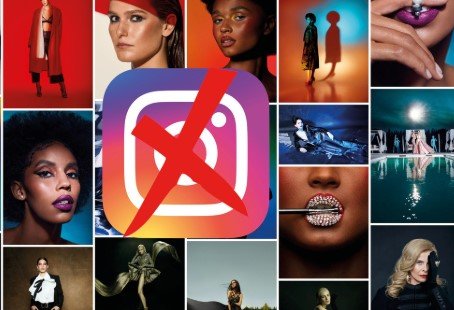Is instagram getting banned: All You Need To Know

Lately, a wave of users keeps asking, is Instagram going to disappear for good? With a spate of unexpected account deletions, nationwide access blocks, and growing legal headaches, the question is popping up everywhere. Instagram is still a global giant, but the recent spike in regional crackdowns and shifting terms of service is leaving many in the dark about what’s next. This piece breaks down the potential triggers for an outright Instagram shutdown, whether they’re rooted in individual, regional, or geopolitical headaches.
Where Instagram Is Already in Hot Water
No, Instagram isn’t banned in every corner of the world
But a handful of nations have tightened the handcuffs, either yanking it off the nationwide grid or loading it down with heavy filters. The motive is usually the same: a desire to quarterback the online narrative, whether for political stability or cultural image control. Full or rolling bans are still on the books in China, Iran, North Korea, and Turkmenistan.
The Long Game of Censorship
In China, the blockade has held since 2014
A clear-cut piece of the state’s playbook against foreign platforms. Iran uses the same tool to mute anti-government protests, limiting Instagram access to the politically convenient. Those bans are familiar enough by now: they flash to life whenever a public cry the party dislikes goes viral. In each of these playgrounds, getting around the wall usually involves a tuned-up VPN to slip through the surveillance lattice.
Temporary Restrictions Amid Political Turmoil
A handful of governments turn off Instagram during elections
Protests, and tense national moments. Across pockets in Africa and Asia, access has been halted for several days during peak periods, then restored when calm returns. Each blackout leaves users with the nagging doubt of whether the next one will be the last.
Read also: The Future of Biometric Technology: Security and Privacy
Will the U.S. or India Ban Instagram?
Instagram Stays in the U.S.
If you’re in the United States, scroll away: Instagram will not be banned. The app is running smoothly, and there’s no law on the horizon singling it out for shutdown. Existing rules on data privacy and online safety trudge along, but none threaten the platform’s continued service.
India Saw Public Jitters, Not a Ban
India buzzed in early 2025 with whispers that Instagram would vanish. Users downloaded backup apps and pressed refresh in a hurry. Officials quickly squashed the noise. No national order has blockaded the app. Select pages or posts may vanish for crossing local rules, but the service itself remains wide open for the rest.
Mass Account Suspensions
Abrupt Account Removals
A troubling new type of crackdown has begun hitting Instagram members: the abrupt suspension or deletion of accounts. In 2025, a wave of reports flooded forums from users who woke up to find their profiles missing. Some had built their accounts from the first year of the service, yet the deletion left zero prior warnings or content strikes. Questions swirled about whether Instagram’s safety system is genuinely protective or simply malfunctioning.
What Triggers the Deletions?
Instagram still depends heavily on AI to scan for violations. When the algorithm misinterprets a post, or if a profile receives a string of reports, the anti-abuse machine can lock the entire account. Behavior that courts trouble, the use of scheduling bots, or flagged content from the past year can all trigger the hammer. Unfortunately, even users who have complied faithfully can wind up ensnared.
Almost No Appeal Path for Users
The deepest frustration lies in the absence of appeal. When Instagram flips the switch on an account without a portal to challenge the decision, the user is left without recourse or explanation. Even well-known creators, whose smaller peers often excuse the risk – can lose their entire legacy in a click, all while strangers wonder if the whole system is testing the outer limit of fairness.
Legal Changes Shaping How Instagram Is Used
Tighter Rules for Younger Users
Several countries are now enacting laws aimed at keeping kids safer online. Australia is one standout example: its latest rules require anyone under 16 to have explicit parental consent before using social media. Instagram is named in the legislation, which means the popular app must now re-check ages and notify guardians before granting access. Though kids under 16 are still able to use the service, the new consent hurdle is the first legal step toward making the platform harder to reach for this age group.
No Immediate Threat in North America
North America has yet to see any legal moves that would outright block Instagram. In both Canada and the United States, state and provincial legislatures are debating privacy laws aimed at data collection and age verification. So far, none of these proposals have singled out Instagram for a prohibition. Critics have flagged its recommendation engines and data-sharing practices, but hearings and drafts remain the only outcomes reported.
What About Future Bans?
Conditions for a Possible Ban
Instagram could find itself restricted in any country that ramps up requirements for content control and user data protections. If it were to repeatedly fall short, failing to block harmful material or disclosing user data contrary to local laws, judges or regulators might pull the app from local app stores. Nonetheless, Meta, the parent company, has a track record of engaging with policymakers and making platform adjustments that lessen the likelihood of outright termination in critical markets.
Business and Revenue Make a Ban Unlikely
Instagram drives significant revenue for brands, influencers, and Meta, particularly in markets where online advertising keeps expanding. Losing access would sting economically, making decision-makers think twice before backing a worldwide ban.
Alternative Apps Might Gain Popularity
When Instagram is blocked, people look for homegrown rivals or connect via VPN. Yet, none have so far replicated Instagram’s depth and reach, so sharing photos, reels, and stories keeps defaulting back to it.
What to Do If Your Instagram Is Banned
Stay Calm and Check the Reason
Spot the ban? No need to stress. Search your inbox first: a warning or email usually arrives. Read it closely and try to see which rule the system thinks you broke.
Try to Appeal the Ban
Head to the Instagram Help Center and look for the appeal button. If you find it, write a courteous note laying out your perspective. If you really think the ban is a mistake, say so and back it up with screenshots or other evidence if you have any.
Take Your Time After a Ban
If you’ve just been banned, resist the urge to sign up again the next moment. Doing it too soon can trigger an automatic new-account suspension. Wait patiently to see if your appeal gets a response. When you do decide to start over, make sure your email, phone number, and all login info are completely different, and stick to the platform’s rules from day one.
Stay Out of Future Trouble
Stay Within Community Guidelines
Instagram makes its rules clear: no hate speech, no fake giveaways, no creativity-stealing reposts, and no bots. When in doubt, keep the post to yourself. Better safe than sorry.
Skip the Automation
Bots that auto-follow, auto-like, or auto-comment are fast paths to a ban. Instagram treats those actions as gamesmanship, and they don’t hesitate to close the book on an account that’s clearly being operated by software.
Don’t Collect Warnings
One community policy warning is a nudge. Two is a shove. Three is a one-way ticket out. Keep an eye on your account, scrub out anything that catches a warning, and never shrug off a notification. Treat every alert like it could be the last warning you get.
Final Thoughts on Is Instagram Getting Banned
So, is Instagram really heading toward a global ban? The short answer is no, at least not everywhere. A handful of nations have acquired the right or the will to shut it down entirely, often to shape a political or cultural narrative. Other places, meanwhile, are tightening the reins on minors or flicking the switch on a temporary blackout. Yet across the vast majority of the globe, the app remains alive and kicking. For anyone who logs in, the best practice is clear: play by the rules, ignore the bots, and share with care. The app’s tomorrow will hinge not only on policy makers and boardrooms but on the small choices each user make





